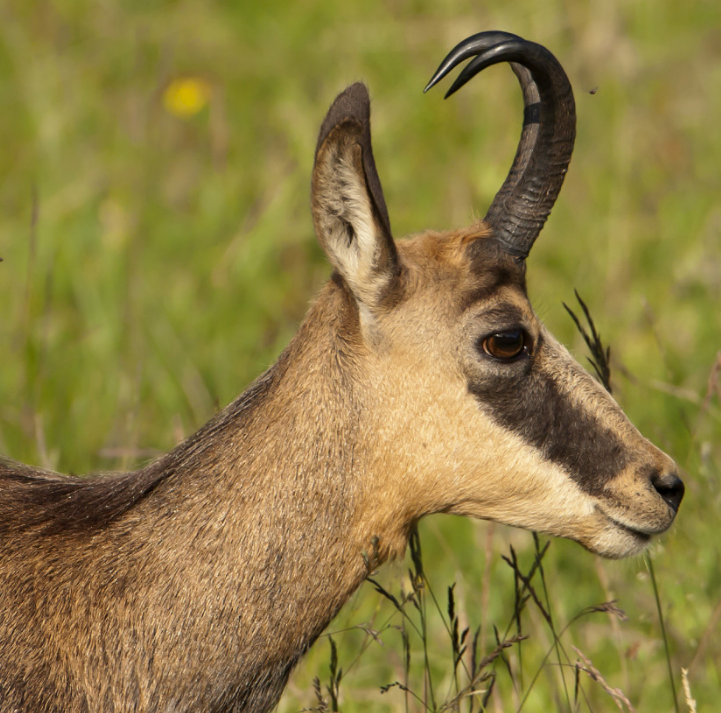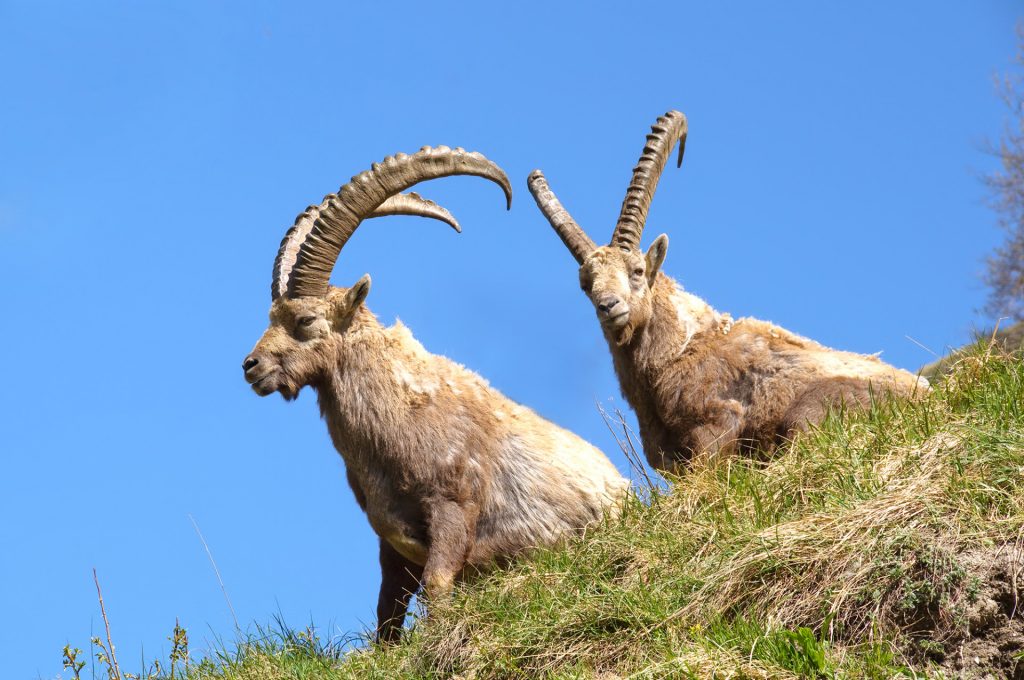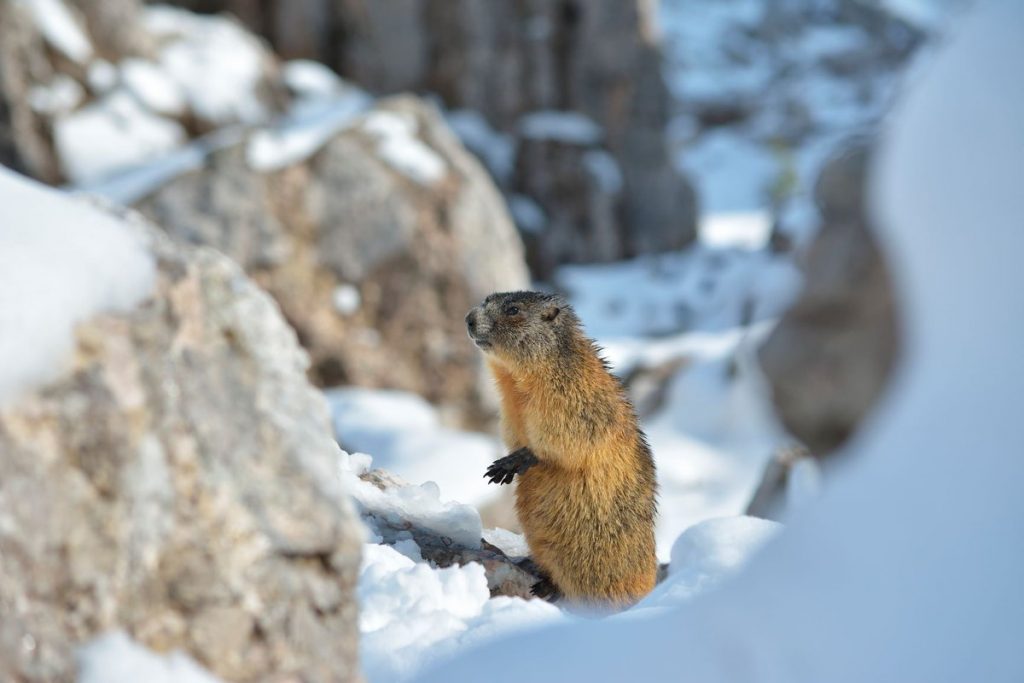Have you ever seen a chamois during your ski holiday? Or maybe it was an ibex?
It’s always exciting to get close to nature when you’re in the Alps, but most of the time you’re closer than you think.
It’s normally only when you’re quiet, or pay close attention, that you’ll notice our many animal friends on the mountain.
The Chamois
The most common animal you’re likely to see is the chamois, as they live in the mid-mountain. It’s smaller than the ibex.
It’s easily recognisable as it has short black horns that curve backwards. If you look more closely you will also notice that there are two black strips running from its eyes to its nose and a while line across the centre of its face.

The Ibex
Also known as a ‘bouqetin’ in France, the ibex is a larger animal that can weigh up to 100kg.
The male horns are longer than on the chamois and can grow to an impressive 60cm – three times as long as the females’.

Chamois are more shy
Perhaps the biggest difference from the chamois is that the ibex will let you approach it, while the chamois will retreat quickly.
This might be because chamois are often hunted around the Alps, while the Ibex is protected.
The Marmotte
An animal you are more likely to see on your holiday is the marmotte. They are easy to recognise and often appear towards the end of the season when the sun comes out.
They are relatively shy and will disappear into their burrows quickly if disturbed. However, the more confident of these cuddly creatures will brazenly sunbathe beneath chairlifts.

Ski Holidays 2021/22
For advice on ski holidays for this winter, please contact the Chaletline team on 01822 617761.



